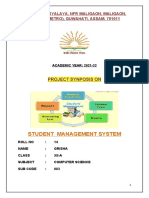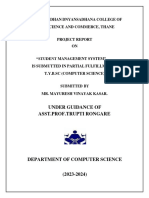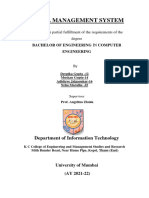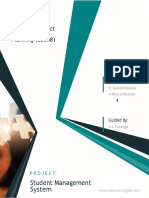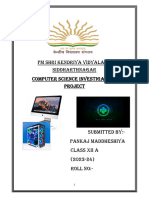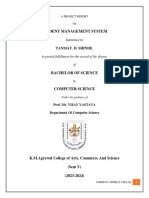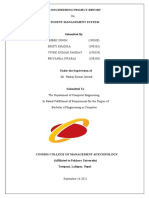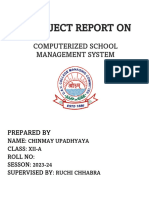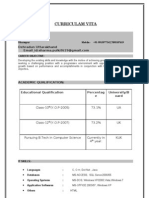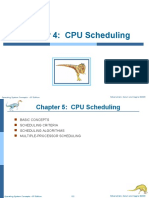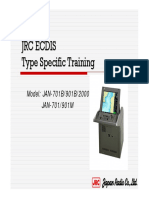0% found this document useful (0 votes)
86 views24 pagesMajor Project Practical File 01
The document is a project report for a Student Management System submitted to Rajiv Gandhi Proudyogiki Vishwavidyalaya as part of the requirements for a Bachelor of Technology degree in Computer Science & Engineering. It outlines the project's purpose, which is to streamline administrative and academic tasks in educational institutions by centralizing student data management and improving communication among stakeholders. The report includes sections on problem definition, proposed system features, technology used, and implementation details.
Uploaded by
prashantginare369Copyright
© © All Rights Reserved
We take content rights seriously. If you suspect this is your content, claim it here.
Available Formats
Download as PDF, TXT or read online on Scribd
0% found this document useful (0 votes)
86 views24 pagesMajor Project Practical File 01
The document is a project report for a Student Management System submitted to Rajiv Gandhi Proudyogiki Vishwavidyalaya as part of the requirements for a Bachelor of Technology degree in Computer Science & Engineering. It outlines the project's purpose, which is to streamline administrative and academic tasks in educational institutions by centralizing student data management and improving communication among stakeholders. The report includes sections on problem definition, proposed system features, technology used, and implementation details.
Uploaded by
prashantginare369Copyright
© © All Rights Reserved
We take content rights seriously. If you suspect this is your content, claim it here.
Available Formats
Download as PDF, TXT or read online on Scribd
/ 24






